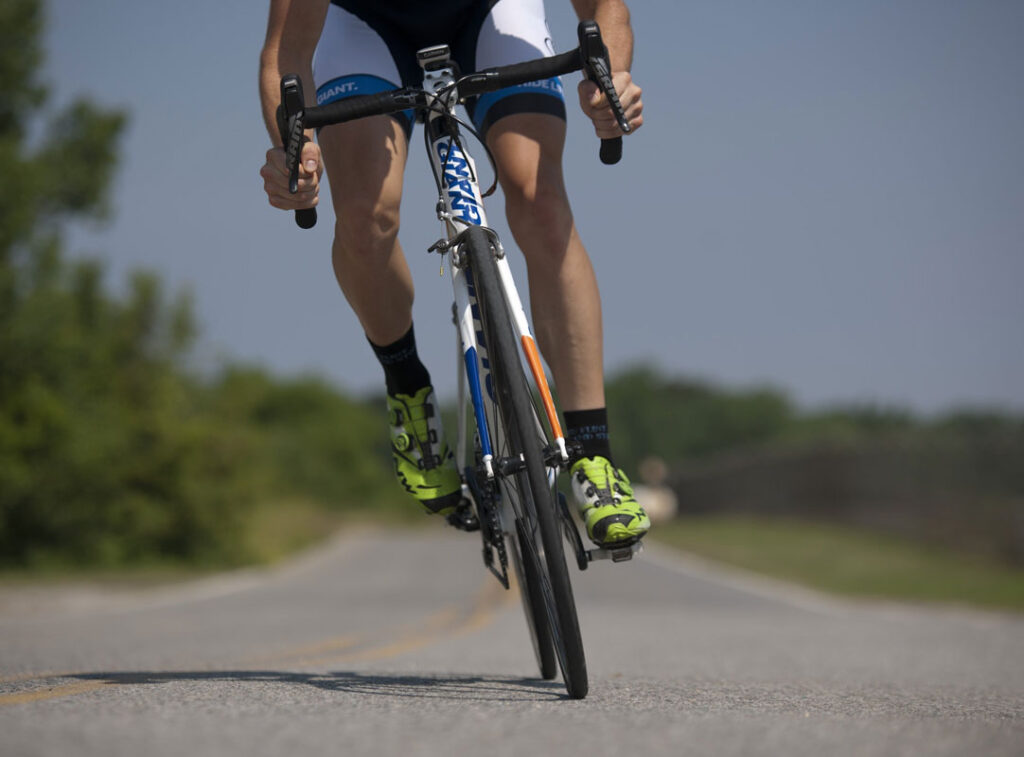Guest post by Jassica Mendez

Cycling is one of the world’s most popular participatory sports. It’s a fantastic method to improve your health and get challenging exercise. However, many people fail to consider the risks associated with the activity they like so much. That’s why we’ll discuss some of the most common cycling injuries. By knowing what they are, you’ll also know what steps you can take to prevent them from happening to you.
Rash
The simple graze is one of the most common cycling injuries, but luckily, it’s also the least dangerous. Although the occasional graze to the legs or arms is a normal part of riding, they may be uncomfortable and ugly. This type of damage may be prevented by covering your legs and arms whenever you can. It can happen while cycling too close to walls, trees, and fences and when you fall.
Knee Pain
One of the most frequent overuse injuries experienced by bikers is knee discomfort. There are two primary categories of knee pain that are commonly mentioned within this.
The first is the patellofemoral syndrome, often known as cyclist’s knee. It is most frequently brought on by anterior knee pain or discomfort in the area around the kneecap. A rapid increase in training volume, improper cleat placement, improper bike fit (wrong frame size, saddle height that is too high or too low, poor saddle posture), and muscle imbalances in the cyclist are the most frequent causes of patellofemoral syndrome. You can prevent this syndrome by using wedges or orthoses within the shoes or under the cleats, changing the location of the cleats, or adjusting saddle height.
Iliotibial Band (ITB) Friction Syndrome is the leading cause of lateral knee pain. This is pain or discomfort on the outside of the knee. This condition is usually diagnosed after a thorough clinical examination. When the knee is flexed 30 degrees, pain becomes most noticeable. Correct saddle height posture combined with hip stabilizing muscle conditioning is the most popular form of prevention for this syndrome.
To give insight into how big of a problem knee pain can be: Philippe Gilbert had to take a few days off and even skip the Tour of Flanders last year due to knee pain.
Saddle Sores
While stiffness and abrasion around the thighs and nether areas are not dangerous, they can be uncomfortable when caused by frequent and prolonged riding. The best method to prevent this is to buy a high-quality saddle for your bike and wear cushioning for protection. Although many riders may not prefer this appearance, padding might provide a more pleasant ride.
Head Injury
The head injury, which can cause brain damage and, regrettably, in some cases, death, is one of the most severe bicycle injuries. In London, head injuries account for 70% of cycling deaths, most of which result from collisions. Riding on congested roads, outside of rush-hour traffic, and, most importantly, wearing a high-quality cycling helmet are all ways cyclists may take every precaution to prevent head injuries. Although wearing a bicycle helmet in the UK is not required, doing so can help avoid catastrophic head injuries that could lead to diminished quality of life or even death.
Even the pros can experience this type of injury. Fabio Jakobsen, who made his spectacular comeback victory on stage two of this year’s Tour de France, famously suffered a devastating head injury that required almost two years of recovery.
Lower Back Ache
Muscle soreness is a common result of being in one posture for an extended time without moving about—the position of riding a bike when cycling places a lot of strain on your spine. Back discomfort is a given when your body is in a flexed position. So during your ride, ensure your back is aligned correctly with the bicycle frame. You shouldn’t have to endure back discomfort all the time. A chiropractor can help with some of the problems brought on by riding.
Forearm or Wrist Pain or Numbness
The elbows of cyclists should be slightly bent while riding (never with their arms locked or straight). Bent elbows will serve as shock absorbers when they encounter potholes on the road. Changing hand postures here will also aid in easing any discomfort or numbness. Cyclist’s Palsy and Carpal Tunnel Syndrome, two frequent wrist overuse ailments, can be avoided by alternating the pressure applied to the inside and outside of the hands and ensuring the wrists do not dangle below the handlebars. Stretching the hands and wrists before riding will also be beneficial, as will the right cycling gear, such as padded gloves.
Muscle Exhaustion
Have you ever noticed how big professional riders’ quadriceps are? This is because they employ these muscles to keep the bike going. They grow big from constant use but remember that your quadriceps require some rest. Lactic acid accumulates in overworked muscles, which begins to hurt the muscles. The discomfort can be reduced with a massage. To allow specific muscles to relax while you exert pressure on others, you should try switching between pedaling in and out from the seat.
Also, even when you’re not on the bike, you should still stay in shape and build your strength and stamina by doing some exercises. Cycling requires both strength and cardio workouts. So if you don’t ride in the winter, try to hit the gym a few times a week.
In Conclusion
Cycling is a great sport and an effective workout. Now that you know some of the most common cycling injuries and how to prevent them, you can feel more relaxed the next time you take your bike on the road.

